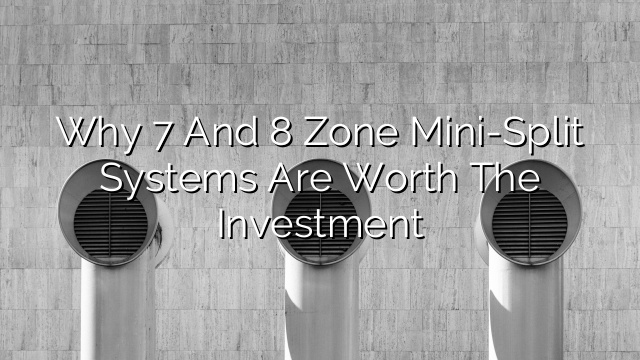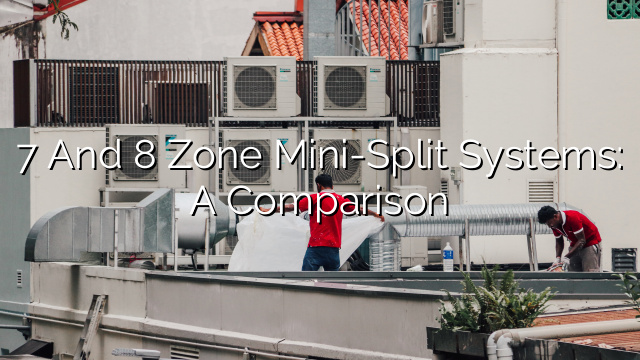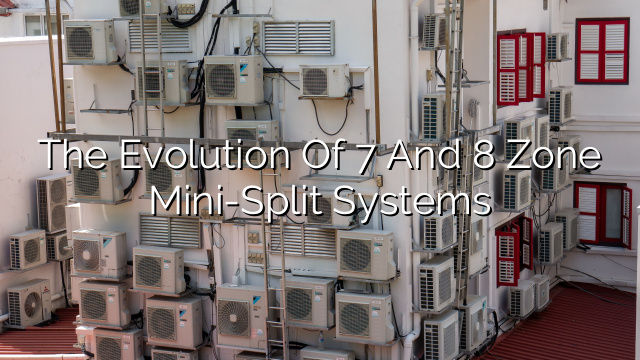Introduction
When it comes to heating and cooling your home, there are a variety of options available. One popular option is a 7-zone mini-split system. This type of system is designed to provide both heating and cooling to different zones or areas of your home. In this blog post, we will explore the basics of 7-zone mini-split systems and help you understand how they can benefit your home.
What is a 7-zone mini-split system?
A 7-zone mini-split system is a type of HVAC system that consists of an outdoor unit and multiple indoor units. The outdoor unit is responsible for compressing and cooling the refrigerant, while the indoor units are responsible for distributing the conditioned air to different areas of your home. The number “7” refers to the maximum number of indoor units that can be connected to the system.
How does a 7-zone mini-split system work?
The outdoor unit of a 7-zone mini-split system is connected to the indoor units through a series of refrigerant lines. The refrigerant circulates between the outdoor unit and the indoor units, absorbing heat from the indoor air and transferring it outside to be released. This process allows the system to provide both heating and cooling to different zones or areas of your home simultaneously.
Benefits of a 7-zone mini-split system
There are several benefits to installing a 7-zone mini-split system in your home:
- Energy efficiency: Mini-split systems are highly efficient, as they only provide conditioned air to the areas that need it. This eliminates the need to heat or cool your entire home when you only need it in one or two areas.
- Zonal control: With a 7-zone mini-split system, you have the ability to control the temperature in each individual zone or area of your home. This allows for personalized comfort and energy savings.
- Space-saving: Unlike traditional HVAC systems that require ductwork, mini-split systems only require small tubing to connect the indoor and outdoor units. This makes them ideal for homes without existing ductwork or for spaces where ductwork is not feasible.
- Quiet operation: Mini-split systems are known for their quiet operation. The indoor units are designed to operate at a low noise level, ensuring a peaceful and comfortable environment.
- Improved air quality: Mini-split systems are equipped with advanced filtration systems that help remove dust, pollen, and other allergens from the air. This can greatly improve the indoor air quality of your home.
- Easy installation: Installing a 7-zone mini-split system is relatively simple and straightforward. It requires minimal construction work and can be completed in a shorter timeframe compared to traditional HVAC systems.
- Cost savings: While the upfront cost of a mini-split system may be higher compared to traditional HVAC systems, the energy savings and increased efficiency can result in long-term cost savings on your energy bills.
Common applications of 7-zone mini-split systems
A 7-zone mini-split system can be used in a variety of applications, including:
- Residential homes: Mini-split systems are a popular choice for heating and cooling individual rooms or areas in residential homes. They can be installed in bedrooms, living rooms, kitchens, or any other area where zonal control is desired.
- Multi-family housing: Mini-split systems are also commonly used in multi-family housing units, such as apartments or condominiums. They allow each unit to have individual control over their heating and cooling, providing personalized comfort for each resident.
- Commercial buildings: In commercial buildings, a 7-zone mini-split system can be used to provide zonal control in different areas, such as offices, conference rooms, or retail spaces. This allows for customized comfort and energy savings in each area.
FAQs
1. Can I install a 7-zone mini-split system myself?
While it is possible to install a 7-zone mini-split system yourself, it is recommended to hire a professional HVAC contractor for the installation. They have the knowledge and expertise to ensure that the system is installed correctly and efficiently.
2. How much does a 7-zone mini-split system cost?
The cost of a 7-zone mini-split system can vary depending on factors such as the brand, capacity, and installation requirements. On average, the cost for equipment and installation can range from $5,000 to $15,000.
3. How long does it take to install a 7-zone mini-split system?
The installation time for a 7-zone mini-split system can vary depending on factors such as the complexity of the installation and the number of indoor units. On average, the installation process can take anywhere from one to three days.
4. Do 7-zone mini-split systems require regular maintenance?
Yes, 7-zone mini-split systems require regular maintenance to ensure optimal performance and efficiency. It is recommended to have a professional HVAC technician perform annual maintenance, which may include cleaning the filters, inspecting the refrigerant levels, and checking the overall system operation.
5. Can a 7-zone mini-split system provide both heating and cooling?
Yes, a 7-zone mini-split system is designed to provide both heating and cooling to different zones or areas of your home. The system uses a heat pump technology that can reverse the refrigerant flow to provide either heating or cooling as needed.
In conclusion
A 7-zone mini-split system is a versatile and energy-efficient option for heating and cooling your home. With zonal control and personalized comfort, this type of system can provide both comfort and energy savings. Whether you are looking to upgrade your existing HVAC system or install a new system, a 7-zone mini-split system is worth considering.






